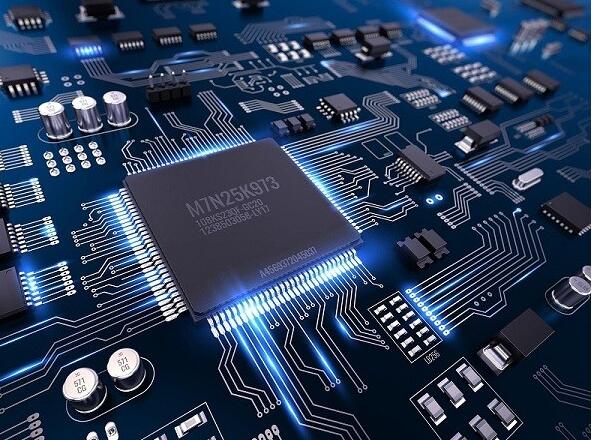Two important points about transistors in PCBA
The basic function of the transistor is to amplify weak signals. This property is called gain. It can produce a stronger output signal, voltage or current, which is proportional to a weaker input signal; that is, it can act as an amplifier. Transistors can also be used to turn current on or off in circuits that are electronically controlled switches, where the amount of current is determined by other circuit elements. It is the most basic electronic component of PCBA board.
1. Transistor as a switch
Triodes are usually used as electronic switches in digital circuits and can be in an "on" or "off" state, for high-power applications such as switch-mode power supplies and low power for logic gates. Important parameters for this application include current switching, processing voltage, and switching speed, which are characterized by rise and fall times.
In the grounded emitter transistor circuit of the optical switch circuit, as the base voltage increases, the emitter and collector currents increase exponentially. As the collector-to-emitter resistance decreases, the collector voltage drops. If the voltage difference between the collector and emitter is zero (or close to zero), the collector current will be limited by the load resistance (bulb) and the supply voltage. This is called saturation because the current flows freely from the collector to the emitter. When saturated, the switch is turned on.

Providing sufficient base drive current is the key to using bipolar transistors as switches. The triode provides current gain, allowing a relatively large current in the collector to be switched to the base terminal through a smaller current. The ratio of these currents depends on the type of transistor. In the optical switch circuit shown in the example, the resistor is selected to provide sufficient base current to ensure that the transistor is saturated.
In the switch circuit, the circuit diagram is to simulate as much as possible an ideal switch with open circuit characteristics when turned off, short circuit when turned on, and instantaneous transition between the two states. Select the parameters so that the "off" output is limited to be too small to affect the leakage current of the connected circuit; the resistance of the transistor in the "on" state is too small to affect the circuit; the transition speed between the two ends is fast enough to not produce Negative Effects.
2. Transistor as amplifier
The common emitter amplifier is designed so that a small change in the voltage (Vin) changes the small current passing through the base of the transistor; the combination of the transistor’s current amplification and the characteristics of the circuit means that a small swing in Vin will produce Vout (power supply Output).
Single-transistor amplifiers can achieve different gains through different configurations, some of which provide current gain, some voltage gain, and some voltage gain.
From mobile phones to TV sets, more products include amplifiers for sound reproduction, radio transmission and signal processing. The first discrete transistor audio amplifiers hardly provided a few hundred milliwatts, but as better transistors became available and the amplifier architecture evolved, power and audio fidelity were gradually increasing. Transistor audio amplifiers of up to several hundred watts are already very common electronic components in PCBA processing, and the prices are getting cheaper.